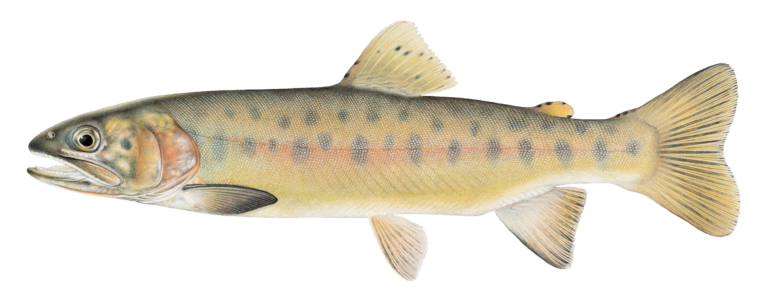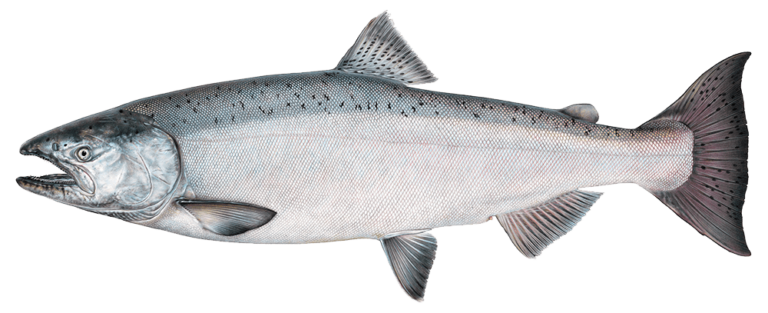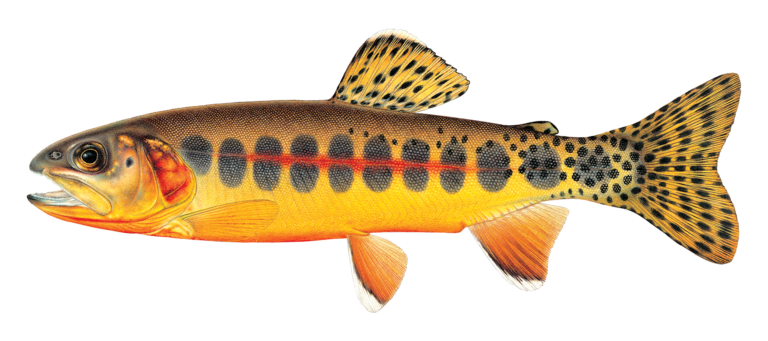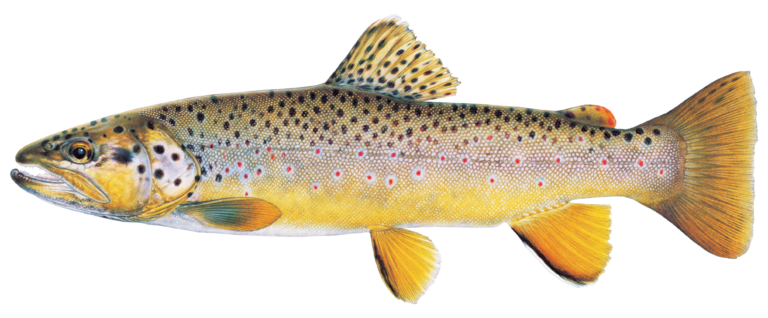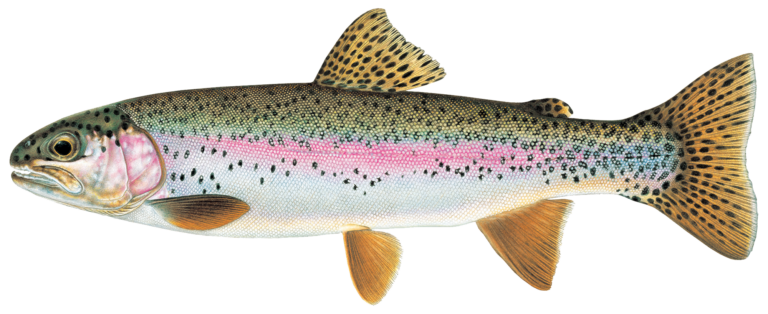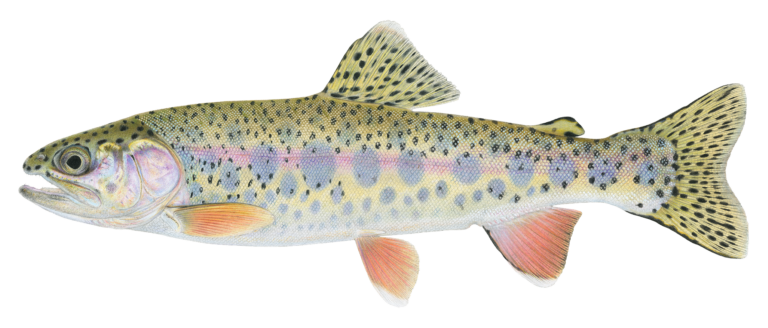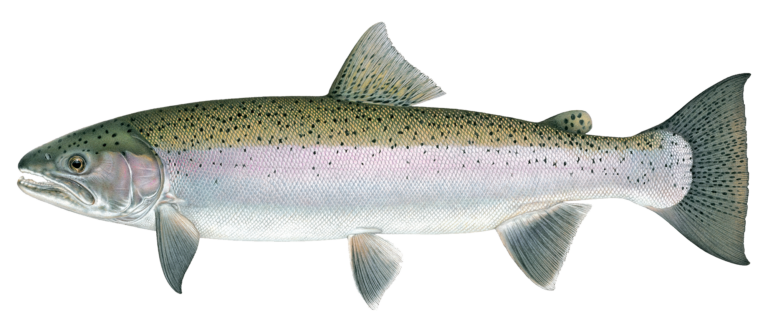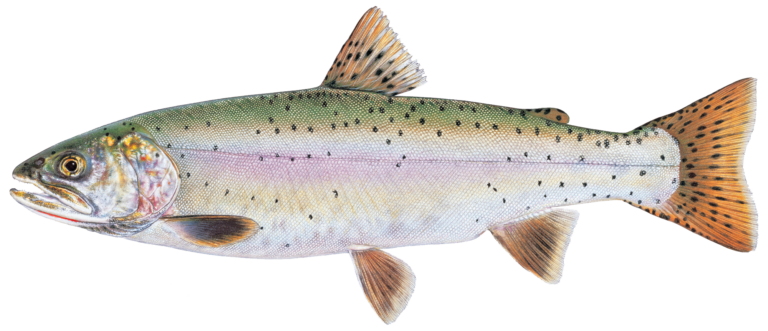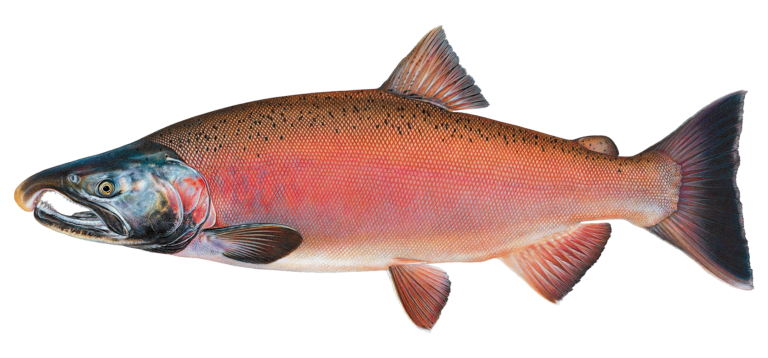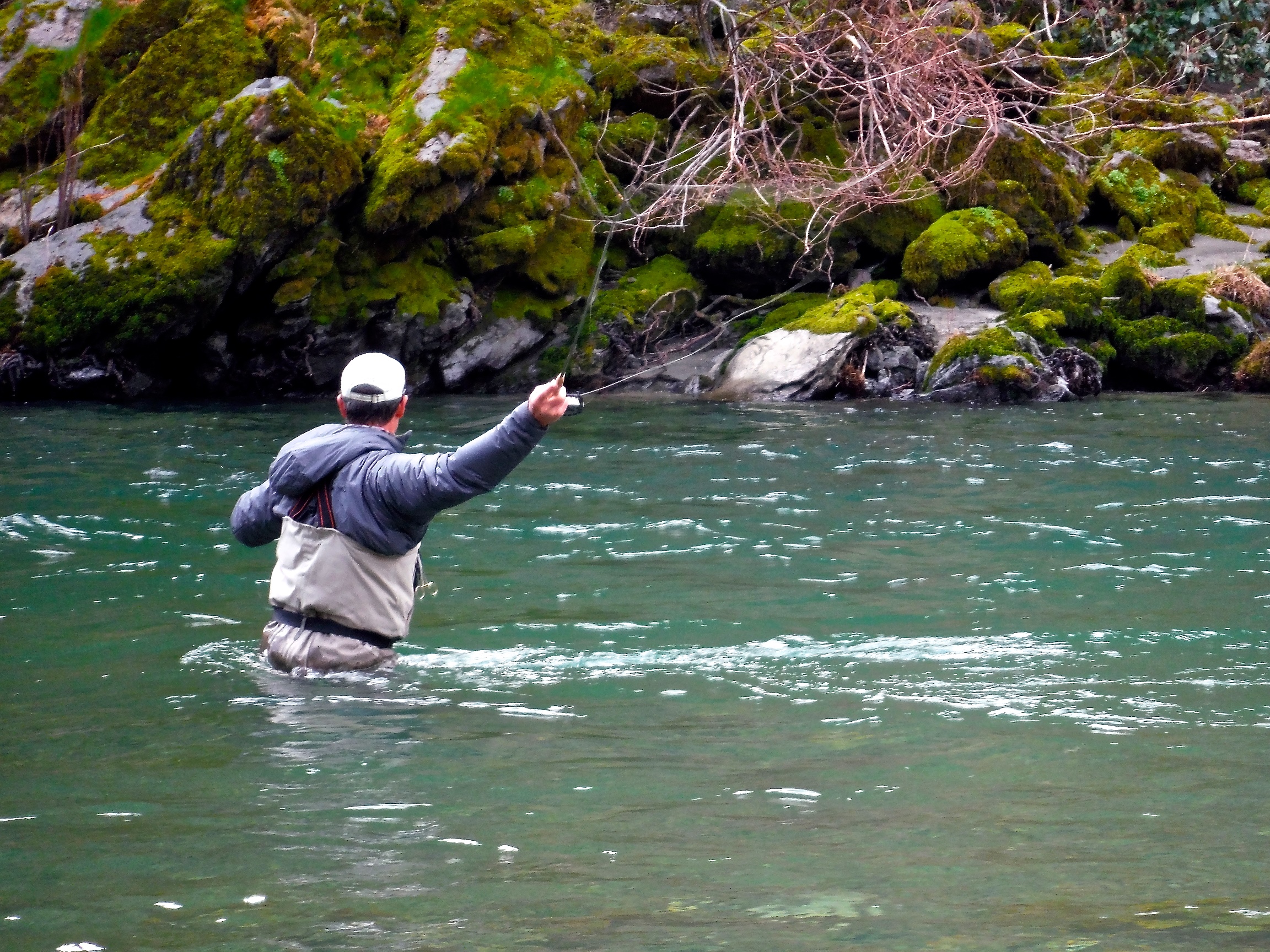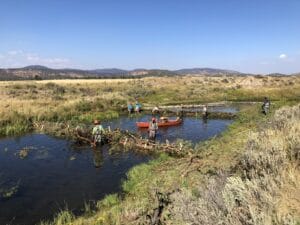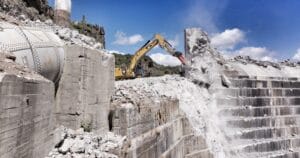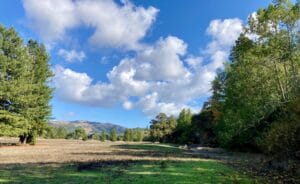California

Overview
California has the most varied landscape, ecology, and climate of any state in America and is a global hotspot for biodiversity. Its 32 species and subspecies of native trout and salmon reflect this. Some of these species, such as the Paiute cutthroat and the Eagle Lake rainbow trout, have evolved to thrive in a single stream system or lake to which they have uniquely adapted. This diversity of species and habitats provides a remarkable number and variety of fishing opportunities.
But the Golden State is also on the front lines of a changing climate. Among the many threats wild and native trout and salmon face are increasingly frequent and severe wildfires and droughts, excessive water diversions, and the legacy impacts of logging, mining, and grazing. Throughout the state, Trout Unlimited works to protect and reconnect coldwater habitats, boost dry season streamflow, improve water quality and water supply, and sustain fishing opportunities.
Threats & Opportunities
The rapidly warming climate, which makes severe drought and extreme wildfire more frequent, is the single biggest threat to California’s trout and salmon and their rivers and streams. Other threats include dams and excessive and poorly timed water diversions from rivers; a water rights and water usage system based on Gold Rush-era conditions; impacts from land uses such as logging, mining, and grazing; illegal cannabis cultivation; housing and energy development; and predation and introgression from non-native species.
How We Work
Reconnection
Trout Unlimited is reconnecting key trout and salmon waters and improving fish passage in dozens of streams across California by taking out major dams on the Klamath and Carmel Rivers and by removing or replacing culverts on tributaries to the Eel, Russian, Noyo, Navarro, Van Duzen, South Fork Kern, and Pajaro rivers. TU works to improve connectivity by enhancing flows in the San Joaquin River, in key tributaries to the Russian River, and in priority streams along the central and north coasts.
Restoration
TU’s restoration work in California focuses on at-risk native trout and salmon species and their habitats and is on the vanguard of process-based restoration. Across the state, TU is improving habitat function and water quality by bringing back beaver dams to the landscape; returning wood structure to streams; reconnecting floodplains; removing or replacing old forest roads and culverts; restoring meadow systems; and boosting dry season flows through innovative water supply solutions for landowners and agricultural operators.
Protection
TU’s California Inland Trout Program works to protect headwaters and meadow systems on public lands, through legislation and through improvements in resource management policy and practices. For example, TU staff and grassroots worked with a variety of conservation allies to prevent a large gold mine in the Bodie Hills that could have degraded Lahontan cutthroat recovery habitat and to gain permanent protection for the headwaters of the Owens River. Currently, TU is playing a lead role in protecting biodiversity and freshwater habitats through engagement in California’s 30×30 Initiative.
Water Use and Management
TU is working through the California Salmon and Steelhead Coalition and the state legislature to improve state water law and management, dedication of environmental flows, drought preparedness and response, watershed planning, and water rights enforcement.
Science
Through a growing network of stream gages and groundbreaking scientific modeling, TU is identifying places where groundwater influences keep streams colder and where off-stream water supply infrastructure projects can help re-wet or sustain dry season flows. TU’s California Science program is also working with tribes, water suppliers, and other partners to restore floodplains, get salmon and steelhead into good spawning and rearing habitats upstream of rim dams, and manage water use and agricultural practices so that salmon and steelhead can take advantage of seasonal flooding in Central Valley rivers.
How You Can Help
Support Trout Unlimited’s restoration of the Klamath River.
Take ActionSupport Trout Unlimited’s campaign to remove the two old dams of the Potter Valley Project on the Eel River.
Take ActionStay up to date about how you can help us care for and recover California’s Priority Waters.
California Conservation Team Leaders
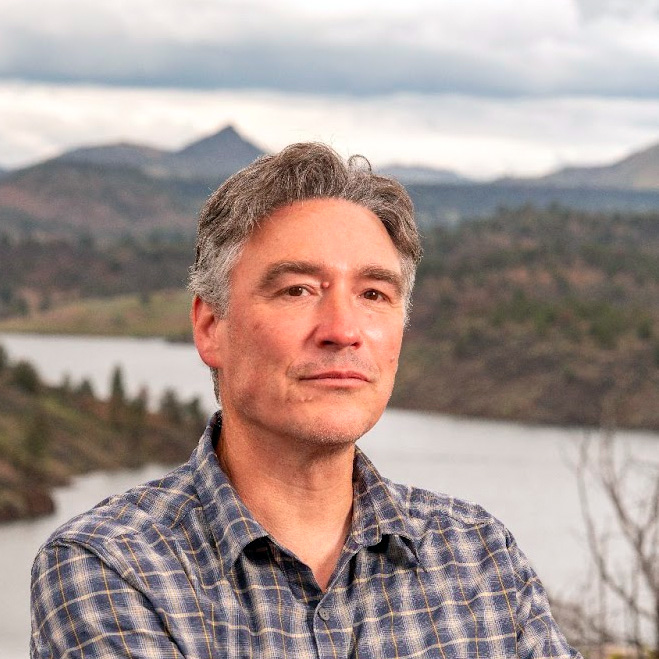
Brian Johnson
California Director
brian.johnson@tu.org
California Director
brian.johnson@tu.org
Priority Waters

-
Klamath River
The Klamath and its largest tributary, the Trinity River, are world-renowned for their salmon and steelhead fishing and provide the economic and cultural foundation for tribes and commercial fishermen in this region. With our tribal and conservation allies, we are taking out four old dams on the Klamath that will reopen 400 stream miles to anadromous salmon and steelhead – the largest dam removal project yet done anywhere. On the Trinity, we are using science to improve the flow regime and advocating for legislation to protect the undammed South Fork and its vital spawning and rearing habitat.
-
Eel River
The Eel is the state’s third longest river and its best hope for the recovery of wild salmon and steelhead runs. TU is working on multiple fronts to reconnect and restore this river system. We are a leader in the campaign to remove the two antiquated Potter Valley Project dams, while our North Coast Coho and Steelhead Project is removing barriers to fish passage and improving water quality and habitat in numerous tributaries and in the mainstem above the dams. Meanwhile, TU’s Science work is improving salmonid population monitoring here.
-
North Coast California
In stream systems such as the Navarro, Mad, Garcia, Noyo, Ten Mile, Usal, and Big rivers, Trout Unlimited is reconnecting and improving habitat and dry season flows through off-channel water supply solutions and better monitoring and modeling; removing fish passage barriers; preventing excessive sediment runoff by decommissioning or improving forest roads; enhancing habitat complexity by tactical placement of large wood; and reducing illegal diversions and pollution from trespass cannabis grows.
-
Russian River
This watershed, most famous for its steelhead fishery, is gaining attention as a focal area for coho salmon conservation. Few watersheds are as affected by California’s increasingly volatile Mediterranean climate, and more stream miles here are drying back in the summer and fall. With a variety of partners, TU’s California Water Program is reconnecting and rewetting this basin’s small tributaries, which are critical habitat for coho and steelhead spawning and rearing, through innovative solutions that boost dry season flows and enhance water supply security.
-
Lagunitas Creek
Lagunitas Creek is one of TU’s longest-running restoration and stewardship efforts in California. This relatively small watershed has an outsized importance for North Coast coho. Over the past four decades, TU’s North Bay (now Golden Gate) Chapter has led and supported projects to improve fish passage, stabilize streambanks, enhance habitat complexity and water quality, and improve public access. In a significant tributary, San Geronimo Creek, the North Coast Coho and Steelhead Project is leading the restoration of the stream where it flows through a former golf course that has been converted to open space.
-
Central Coast
In small coastal watersheds between San Francisco Bay and Morro Bay, TU’s California Water Project is leading restoration projects that reconnect and improve vital habitats for the threatened South Central Coastal Steelhead. In streams such as the Carmel, Arroyo Seco, Pajaro and Big Sur Rivers and in wild steelhead factories such as Pescadero and San Gregorio Creeks, TU is removing old dams and weirs, replacing blocked culverts, building new bridges, converting former golf courses to parks, restoring floodplains, and developing off-stream storage solutions for landowners in waters prioritized in the federal recovery plan for SCC Steelhead.
-
Sacramento and San Joaquin River Watersheds
In famous trout streams such as the Upper and Lower Sacramento, McCloud, Pit, Merced, and Tuolumne Rivers and their tributaries, TU is working with tribes and other partners to rebuild native wild salmon and steelhead stocks by evolving the dynamic over water management from one of conflict to one of collaboration; improve streamflow regimes through hydropower processes; reconnect and improve habitat in spawning tributaries; return salmon to spawning habitat above impassable dams and diversions; make forests and meadows more resilient to climate change; protect and improve water quality and hydrology in headwaters; and restore streams and floodplains degraded by mining and other land uses.
-
Desert Terminal Lakes
In legendary trout waters such as the Truckee River, the East Walker River, and Eagle Lake, TU is helping to recover native Lahontan cutthroat; protecting headwaters through new legislation and resource management direction; reconnecting and restoring tributaries, floodplains and meadows; repairing or decommissioning old forest roads, bringing beavers and beaver dam analogues back to the landscape, and restoring habitat degraded by legacy land uses. TU is also working to prevent impacts from mining to the designated Wild Trout water of Hot Creek and other Eastern Sierra streams.
-
Central and Southern Sierra
Across the southern third of the Sierra Nevada range, TU is protecting and recovering California’s state freshwater fish, the golden trout, and native Kern River and Little Kern River rainbow trout, by leading partnerships with resource agencies, tribes, and other stakeholders to restore meadows and streams, better protect headwaters, remove fish passage barriers, and improve fishing opportunities.

